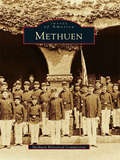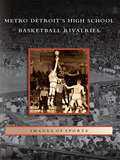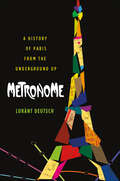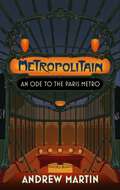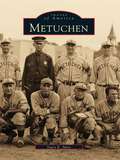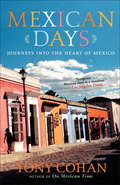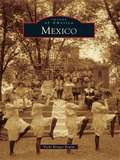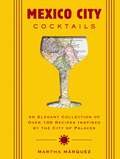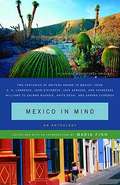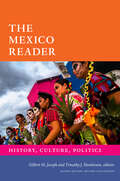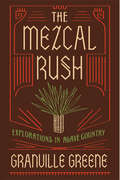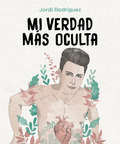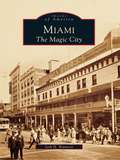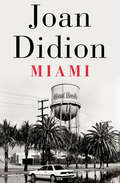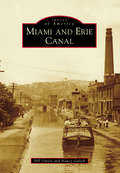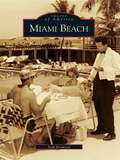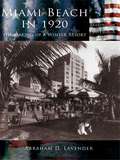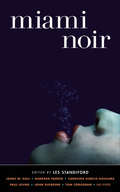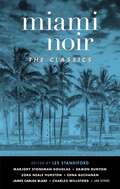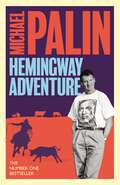- Table View
- List View
Methuen
by Methuen Historical CommissionMethuen is located in the Merrimack Valley in northeastern Massachusetts. Thirty miles north of Boston, Methuen grew out of the Spicket Falls community during the 1800s as the Industrial Revolution arrived in this agricultural community.During this century, the town's wealthiest families, the Searles, the Tenneys, and the Nevins, brought both economic and cultural growth by building numerous mills, churches, schools, and museums in the area. The citizens, immigrants, and Yankees alikeformed the backbone and built the character of Methuen that can still be seen today. Methuen brings together many never-before-seen photographs dating from the earliest days of photography to the 1960s.The history of the town is the story of its people, from the farmers and mill workers to the millionaires and their descendants. Their stories are intertwined with the images of the changing landscape of Methuen, including landmarks, storefronts, schools, and houses of worship. Some can still be seen today, while others exist only in memories.
Metro Detroit's High School Basketball Rivalries (Images of Sports)
by T. C. CameronFew cities can claim a hardwood heritage like that found in metro Detroit. Metro Detroit has been the epicenter for cataclysmic change in the past 60 years that no other major American city has suffered, but the one constant among so much upheaval is a passionate following afforded high school basketball. The rise and fall of the automotive industry, the Motown record label's emergence and eventual relocation, social and racial unrest, and the polarization of one of America's great cities has not slowed the love and passion Detroiters-city and suburban dwellers alike-share for prep basketball.
Metronome: A History of Paris from the Underground Up
by Loránt DeutschA phenomenal bestseller in France, Metronome presents a fascinating history of Paris through the lens of the city's iconic Metro systemDid you know that the last Gallic warriors massacred by the Romans lie beneath the Eiffel Tower? That the remains of Paris's first cathedral are under a parking lot in the Fifth District? Metronome follows Loránt Deutsch, historian and lifelong Francophile, as he goes on a compelling journey through the ages, treating readers to Paris as they've never seen it before. Using twenty-one stops of the subway system as focal points—one per century—Deutsch shows, from the underground up, the unique, often violent, and always striking events that shaped one of the world's most romanticized city. Readers will find out which streets are hiding incredible historical treasures in plain sight; peer into forgotten nooks and crannies of the City of Lights and learn what used to be there; and discover that, however deeply buried, something always remains.
Metropolitain: An Ode to the Paris Metro
by Andrew MartinAndrew Martin has been described as 'the laureate of railways', having written many books with railway themes. But Andrew has always been obsessed with the Paris Metro, hence Metropolitain: An Ode to the Paris Metro, the first English history of the Metro for the general reader.Metropolitain is as stylish as the Metro itself and laced with cultural references. Andrew explains why Last Tango in Paris is a great Metro film, and what the Metro chase scene in the classic thriller, Le Samourai, says about Parisian culture. He describes how he came to appreciate the beauty of Guimard's sinuous green Metro entrances when he bought a lily of the valley and observed it flowering on his desk. We meet Andrew's half-English, half-French friend, Julian, who runs a society dedicated to Metro history. He tells Andrew, 'A Metro station is like the wine cellar of chateau, which is a very nice thing to be reminded of.'The book takes the reader on a constant tour of Paris, both underground and over. But Paris, and the Metro, is changing, undergoing a huge expansion. This, and the imminence of the Paris Olympics, make this a timely title.
Metropolitain: An Ode to the Paris Metro
by Andrew MartinAndrew Martin has been described as 'the laureate of railways', having written many books with railway themes. But Andrew has always been obsessed with the Paris Metro, hence Metropolitain: An Ode to the Paris Metro, the first English history of the Metro for the general reader.Metropolitain is as stylish as the Metro itself and laced with cultural references. Andrew explains why Last Tango in Paris is a great Metro film, and what the Metro chase scene in the classic thriller, Le Samourai, says about Parisian culture. He describes how he came to appreciate the beauty of Guimard's sinuous green Metro entrances when he bought a lily of the valley and observed it flowering on his desk. We meet Andrew's half-English, half-French friend, Julian, who runs a society dedicated to Metro history. He tells Andrew, 'A Metro station is like the wine cellar of chateau, which is a very nice thing to be reminded of.'The book takes the reader on a constant tour of Paris, both underground and over. But Paris, and the Metro, is changing, undergoing a huge expansion. This, and the imminence of the Paris Olympics, make this a timely title.
Metuchen
by Stacy E. SpiesLocated in central New Jersey's Middlesex County,Metuchen was historically known for the stellarcollection of literary, artistic, and industrial talent who resided here, and earned the nickname the "Brainy Boro." Since its beginnings as a village within Raritan township, Metuchen has matured from its roots as a commercial center for area farmers into a desirable suburban community. Metuchen compiles photographs from the rich collections of the Metuchen-Edison Historical Society, including some of the hundreds of photographs taken in the early years of the twentieth century by resident J. Lloyd Grimstead. The pages of Metuchen invite you to shop the businesses along Main Street, wait for the morning train with the commuters, and tour the gracious homes along Graham and Lake Avenues. In sharp, illustrative detail, you can visit historicBorough Hall and the library, and meet or reacquaintyourself with some of the people who made Metuchentheir home.
Mexican American Baseball in the Alamo Region (Images of Baseball)
by Richard A. Santillán Grace G. Charles Gregory Garrett Jorge Iber Alberto RodríguezMexican American Baseball in the Alamo Region celebrates the game as it was played in the Tejano and Tejana communities throughout Texas. This regional focus explores the importance of the game at a time when Spanish-speaking people were demanding cultural acceptance and their political and civil rights in cities like San Antonio, Corpus Christi, New Braunfels, San Diego, Kingsville, and Pleasanton. All had thriving Mexican American communities that found comfort in the game and pride in their abilities on the field. On these pages are historical images and wonderful stories that are now immortalized, taking their rightful place in the annuals of the game. ¡Viva Tejas, Viva Béisbol, y Viva los Peloteros!
Mexican Days: Journeys into the Heart of Mexico
by Tony CohanTony Cohan's On Mexican Time, his chronicle of discovering a new life in the small Mexican mountain town of San Miguel de Allende, has beguiled readers and become a travel classic. Now, in Mexican Days, point of arrival becomes point of departure as--faced with the invasion of the town by tourists and an entire Hollywood movie crew, a magazine editor's irresistible invitation, and his own incurable wanderlust--Cohan undertakes a richer, wider exploration of the country he has settled in. Told with the intimate, sensuous insight and broad sweep that captivated readers of On Mexican Time,Mexican Days is set against a changing world as Cohan encounters surprise and adventure in a Mexico both old and new: among the misty mountains and coastal Caribbean towns of Veracruz; the ruins and resorts of Yucatán; the stirring indigenous world of Chiapas; the markets and galleries of Oaxaca; the teeming labyrinth of Mexico City; the remote Sierra Gorda mountains; the haunted city of Guanajuato; and the evocative Mayan ruins of Palenque. Along the way he encounters expatriates and artists, shady operatives and surrealists, and figures from his past. More than an immensely pleasurable and entertaining travel narrative by one of the most vivid, compelling travel voices to emerge in recent years,Mexican Daysis both a celebration of the joys and revelations to be found in this inexhaustibly interesting country and a searching investigation of the Mexican landscape and the grip it is coming to have in the North American imagination.
Mexico
by Vicki Berger ErwinAfter its founding in 1836, Mexico was named county seat of the newly formed Audrain County. Growth in the primarily agricultural region was slow until the coming of the North Missouri Railroad and the Graduation Act that made land available from the federal government for 12.5¢ an acre. With the introduction of breeding and training saddle horses, the discovery of fire clay deposits, and the implementation of more efficient means of turning the clay into heat resistant brick, Mexico's star ascended. During its heyday, the city was known as the "saddle horse capital" and the "firebrick capital of the world." Today Mexico continues to survive and thrive as "main street of the Midwest."
Mexico: The Struggle for Peace and Bread
by Frank TannenbaumInto this illuminating study of the meaning of Mexico’s recent history Frank Tannenbaum has put the distillation of more than three decades of the familiarity with that country. Having traveled Mexico from the Rio Grande to the Guatemalan border, from the Gulf to the Pacific, and having been friendly with peasants, city folk, politicians, philosophers, artists and presidents, he understands Mexico as few foreigners can understand it. This is not one more travel book, but a serious, well-founded survey of what, humanly speaking, Mexico is—in terms of sociology, politics, economics, and psychology. It tells how Mexico came to be that way, and ponders on what it is likely to become. This book begins with a rapid survey of significant events from Hernan Cortés to Porfirio Díaz; continues with a searching analysis of the foreign and domestic policies of the present Mexican regime. In a final chapter it demonstrates the enormous importance to general United States foreign policy of Woodrow Wilson’s and Franklin D. Roosevelt’s conduct of Mexican-American relations. Here is a book to put on the shelf of enduring books about our fascinating southern neighbors, along with the classic works of Bernal Díaz, Mme Calderón de la Barca, Charles M. Flandrau, Ernest Gruening, Eyler Simpson, Henry Bamford Parkes, and Miguel Covarrubias.
Mexico City Cocktails: An Elegant Collection of Over 100 Recipes Inspired by the City of Palaces (City Cocktails)
by Rosa Martha Márquez OropezaJourney through the bustling bars and hidden gems of one of the world&’s most dynamic cities.From mezcal to tequila, from classic concoctions to innovative creations, uncover the secrets behind Mexico City&’s most beloved beverages with this spirited collection. With over 100 recipes and dozens of bartender profiles, you can drink like a local wherever you are. This book is broken down by neighborhood, so you can find the best bars and finest signature creations that Mexico City has to offer. Residents and tourists alike will discover locations and drinks that are sure to satisfy all tastes.Within the gorgeous, die-cut covers, you'll find:More than 100 essential and exciting cocktail recipes, including recipes for bespoke ingredients and other serving suggestionsInterviews with the city&’s trendsetting bartenders and mixologistsBartending tips and techniques from the expertsFood and drink destinations across the cityAnd much more! Get a taste of Mexico City&’s craft cocktail scene without ever leaving your zip code with Mexico City Cocktails.
Mexico - Culture Smart!
by Guy MavorCulture Smart! provides essential information on attitudes, beliefs and behavior in different countries, ensuring that you arrive at your destination aware of basic manners, common courtesies, and sensitive issues. These concise guides tell you what to expect, how to behave, and how to establish a rapport with your hosts. This inside knowledge will enable you to steer clear of embarrassing gaffes and mistakes, feel confident in unfamiliar situations, and develop trust, friendships, and successful business relationships.Culture Smart! offers illuminating insights into the culture and society of a particular country. It will help you to turn your visit-whether on business or for pleasure-into a memorable and enriching experience. Contents include* customs, values, and traditions* historical, religious, and political background* life at home* leisure, social, and cultural life* eating and drinking* do's, don'ts, and taboos* business practices* communication, spoken and unspoken"Culture Smart has come to the rescue of hapless travellers." Sunday Times Travel"... the perfect introduction to the weird, wonderful and downright odd quirks and customs of various countries." Global Travel"...full of fascinating-as well as common-sense-tips to help you avoid embarrassing faux pas." Observer"...as useful as they are entertaining." Easyjet Magazine"...offer glimpses into the psyche of a faraway world." New York Times
Mexico In Mind: An Anthology
by Maria FinnTwo centuries of writers drawn to Mexico--from D. H. Lawrence, John Steinbeck, Jack Kerouac, and Tennessee Williams to Salman Rushdie, Anita Desai, and Sandra Cisneros This scintillating literary travel guide gathers the work of great writers celebrating Mexico in poetry, fiction, and nonfiction. Ranging from 1843 to the present, Mexico in Mind offers a remarkably varied sampling of English-speaking writers' impressions of the land south of the border. John Reed rides with Pancho Villa in 1914; Graham Greene defends Mexico's priests; Langston Hughes describes a bullfight; Jack Kerouac and William Burroughs find Mexico intoxicating; Alice Adams visits Frida Kahlo's house; Ann Louise Bardach meets the mysterious Subcommandante Marcos face to face. Fictional accounts are equally vivid, including poems by Muriel Rukeyser, Archibald Macleish, and Sandra Cisneros, short stories by Katherine Anne Porter and Ray Bradbury, and excerpts from John Steinbeck'sThe Pearl,Tennessee Williams'Night of the Iguana,and Salman Rushdie'sThe Ground Beneath Her Feet. From the bustle of Mexico City to coffee planations in remote Chiapas, from Mayan ruins to the markets at Oaxaca, the scenes evoked in this anthology reflect the rich variety of the place and its history, sure to enchant vacationers, expatriates, and armchair travelers everywhere. Alice Adams * Ann Louise Bardach * Ray Bradbury * William S. Burroughs * Frances Calderón de la Barca * Ana Castillo * Sandra Cisneros * Anita Desai * Erna Fergusson * Charles Macomb Flandrau * Donna Gershten * Graham Greene * Langston Hughes * Fanny Inglehart * Gary Jennings * Diana Kennedy * Jack Kerouac * D. H. Lawrence * Malcolm Lowry * Archibald Macleish * Rubén Martínez * Tom Miller * Katherine Anne Porter * John Reed * Luis Rodriguez * Richard Rodriguez * Muriel Rukeyser * Salman Rushdie * John Steinbeck * Edward Weston * Tennessee Williams
The Mexico Reader: History, Culture, Politics (The Latin America Readers)
by Gilbert M. Joseph and Timothy J. HendersonThe Mexico Reader is a vivid and comprehensive guide to muchos Méxicos—the many varied histories and cultures of Mexico. Unparalleled in scope, it covers pre-Columbian times to the present, from the extraordinary power and influence of the Roman Catholic Church to Mexico’s uneven postrevolutionary modernization, from chronic economic and political instability to its rich cultural heritage. Bringing together over eighty selections that include poetry, folklore, photo essays, songs, political cartoons, memoirs, journalism, and scholarly writing, this volume highlights the voices of everyday Mexicans—indigenous peoples, artists, soldiers, priests, peasants, and workers. It also includes pieces by politicians and foreign diplomats; by literary giants Octavio Paz, Gloria Anzaldúa, and Carlos Fuentes; and by and about revolutionary leaders Pancho Villa and Emiliano Zapata. This revised and updated edition features new selections that address twenty-first-century developments, including the rise of narcopolitics, the economic and personal costs of the United States’ mass deportation programs, the political activism of indigenous healers and manufacturing workers, and the impact of the COVID-19 pandemic. The Mexico Reader is an essential resource for travelers, students, and experts alike.
The Mezcal Rush: Explorations in Agave Country
by Granville Greene"A rich, inclusive portrait of one of the world's great drinks." —Kirkus ReviewsMezcal. In recent years, the oldest spirit in the Americas has been reinvented as a pricy positional good popular among booze connoisseurs and the mixologists who use it as a cocktail ingredient. Unlike most high–end distillates, most small–batch mezcal is typically produced by and for subsistence farming communities, often under challenging conditions. As Granville Greene spends time with maestros mezcaleros, who distill their drinks using local agaves and production techniques honed through generations, mezcal becomes a spirit of contradictions—both a liquid language celebrating village identity and craftsmanship, and a luxury export undergoing a gold–rush–style surge. The Mezcal Rush explores the complications that can arise when an artisanal product makes its way across borders.
Mi verdad más oculta
by Jordi RodriguezDescubre en el primer libro de Jordi Rodríguez todo lo que aún no sabes. Su verdad más oculta. «El libro que tienes entre las manos no es el típico libro para fans. No voy a contarte exactamente mi vida, sino lo que la vida me ha hecho sentir a mí en distintos momentos. Este libro soy yo intentando conectar contigo. Soy yo buscando mi liberación completa. Lo que sí encontrarás en estas páginas son reflexiones íntimas, relatos de mi infancia, anécdotas de mi viaje a México, mis impresiones del día a día como influencer y, sobre todo, algo que estoy deseando compartir contigo. En las redes solo muestro una cara de mí, una parte de mi historia. Si quieres conocer mi verdad más oculta, este libro es para ti.»
Miami: The Magic City (Images of America)
by Seth H. BramsonMiami sprang into existence on July 28, 1896, following the extension of the Florida East Coast Railway from West Palm Beach on April 15, 1896, and the publication of the soon-to-be city's first newspaper, The Miami Metropolis, on May 15, 1896. However, evidence suggests people lived in the area as early as the 1700s. Nicknamed "the Magic City" by publicists working for railroad and hotel builder Henry Flagler, Miami has weathered yellow fever epidemics, World War I, the 1920s boom and bust, World War II, and numerous other economic ups and downs to become one of the world's great cities and the catalyst for the growth of the South Florida megalopolis.
Miami (Classics Of Reportage Ser.)
by Joan DidionAn astonishing account of Cuban exiles, CIA informants, and cocaine traffickers in Florida by the New York Times–bestselling author of South and West. In Miami, the National Book Award–winning author of The Year of Magical Thinking looks beyond postcard images of fluorescent waters, backlit islands, and pastel architecture to explore the murkier waters of a city on the edge. From Fidel Castro and the Bay of Pigs invasion to Lee Harvey Oswald and the Kennedy assassination to Oliver North and the Iran–Contra affair, Joan Didion uncovers political intrigues and shadowy underworld connections, and documents the US government&’s &“seduction and betrayal&” of the Cuban exile community in Dade County. She writes of hotels that offer &“guerrilla discounts,&” gun shops that advertise Father&’s Day deals, and a real-estate market where &“Unusual Security and Ready Access to the Ocean&” are perks for wealthy homeowners looking to make a quick escape. With a booming drug trade, staggering racial and class inequities, and skyrocketing murder rates, Miami in the 1980s felt more like a Third World capital than a modern American city. Didion describes the violence, passion, and paranoia of these troubled times in arresting detail and &“beautifully evocative prose&” (The New York Times Book Review). A vital report on an immigrant community traumatized by broken dreams and the cynicism of US foreign policy, Miami is a masterwork of literary journalism whose insights are timelier and more important than ever.
Miami and Erie Canal (Images of America)
by Nancy Gulick Bill OetersIn the 1800s, the United States was a nation obsessed with finding a form of transportation that was the fastest, cheapest, and most reliable; at the time, canals were the answer. Canals broke through vast, open countryside, forested woodlands, and rolling hills to expose the heart of the nation to development. They took passengers and goods off of dusty or muddy roads and delivered them to their destinations faster and cheaper than by any other means. From Toledo to Cincinnati, the Miami and Erie Canal provided western Ohio with that sorely needed waterway and became part of the 1,000 miles of Ohio canals contributing to the national network of canals. Today, with the help of government, corporations, and citizens, many parts of the Ohio canal system have been preserved or restored and can be visited and experienced. Watered sections of canal quietly reflect a bygone era and lead an explorer down the towpaths of history.
Miami Beach
by Seth BramsonMiami Beach began its rise to the top of the world's resort scene when Carl Fisher, builder of the Indianapolis Motor Speedway, arrived prior to 1920. The lure of "The World's Playground" was impossible to ignore for many, as hotels and restaurants flourished, even through the Great Depression. The images in this volume evoke poignant memories of Miami Beach's great past, almost inevitable downturn, and return to life with the discovery of South Beach and a renewed interest in art deco. Among the vintage views, most of which have never before been published, are early Lincoln Road and Washington Avenue; Miami Beach High School; Parham's; Junior's; Wolfies; Pumperniks; the first hotel on Miami Beach, Brown's; the Roney Plaza; the Fontainebleau; and, of course, the people who helped create this modern paradise.
Miami Beach in 1920, The Making of a Winter Resort: The Making Of A Winter Resort (Making of America)
by Abraham D. LavenderRecognized for its poise and fashion, Miami Beach embodies the best elements of the new American city: cultural diversity, imaginative architecture, and dazzling scenery. In many aspects, Miami Beach is a metropolitan masterpiece, sculpted by the careful hands of visionary entrepreneurs against a magnificent coastal backdrop. The evolution of Miami Beach from a small, uninhabited strip of palmetto scrub and swamp into an internationally-renowned resort is a fascinating tale of human ingenuity, endurance, and foresight. A milestone in the city's development, the year 1920 marked many significant improvement, such as the new County Causeway bridge, and many "firsts" for the expanding hamlet, including the first electric trolley, the first automated telephone system, and its first post office building. Readers of all ages will be thoroughly entertained as they explore their Miami Beach of yesteryear: a time of Prohibition and bootlegging, grand hotels and lavish casinos, budding polo fields and golf courses, and the many distinct personalities that added color and life to this burgeoning town.
Miami Noir (Akashic Noir)
by Les StandifordBrand-new stories by: James W. Hall, Barbara Parker, John Dufresne, Paul Levine, Carolina Garcia-Aguilera, Tom Corcoran, Christine Kling, George Tucker, Kevin Allen, Anthony Dale Gagliano, David Beaty, Vicki Hendricks, John Bond, Preston Allen, Lynne Barrett, and Jeffrey Wehr. From the introduction by Les Standiford: The truth is that Miami, though naturally lovely, is a frontier town, perched on the border between the known and the rarely before experienced . . . We are not only on the edge of the continent, we are to this country what New York was in Ellis Island's heyday, what the West Coast was in the middle of the 20th century. This is where the new arrivals debark these days, and it is no mistake that during the last decade of the last century, commentators as diverse as Joan Didion, David Rieff, and T.D. Allman devoted entire volumes to Miami's role as the harbinger for America's future . . . But for now, the novel of crime and punishment is the perfect vehicle to convey the spirit and the timbre of this brawling place to a wider world.
Miami Noir: The Classics (Akashic Noir #0)
by Les StandifordThe long-awaited sequel to 2006's best-selling Miami Noir highlights an outstanding tradition of legendary writers exploring the dark side of paradise. "The 19 stories featured in the superb Miami Noir: The Classics are solidly e
Michael Palin's Hemingway Adventure
by Michael PalinA winning combination of No.1 travel writer Michael Palin and one of the great literary figures of the century.When Michael Palin was researching for his novel HEMINGWAY'S CHAIR his interest was stimulated by Hemingway's appetite for travel and 'Papa's' evocations of the places he knew. Hemingway remains a compelling figure, and Palin's goal was to revisit Hemingway's world. This book includes the American West ('wide lawns and narrow minds'), Idaho, Michigan ('fly fishing, hunting'), Europe in the First World (where Hemingway was wounded serving in the Ambulance Brigade), Cuba (where Hemingway wrote FOR WHOM THE BELL TOLLS), Paris in the Roaring Twenties and Spain during the Spanish Civil War, Sun Valley and Key West - where the Hemingway lookalike competition is an annual event.
